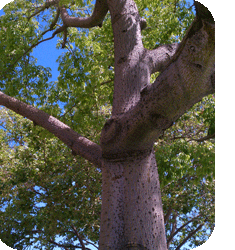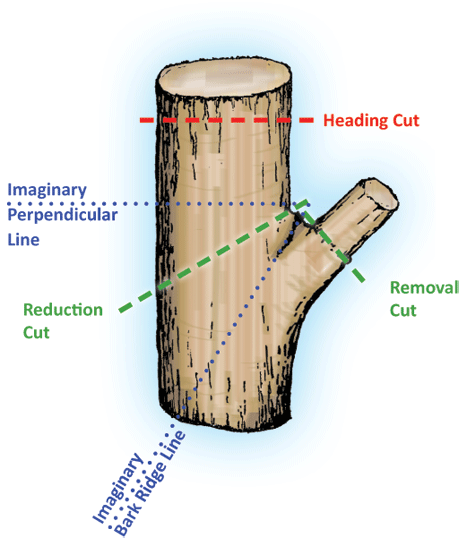
This mailer has been provided as an avenue of dispersing information related to landscape architecture in hopes of fostering greater understanding and collaboration between professions. Topics address issues that affect the built environment within which we live.
"Train up a fig tree in the way it should go, and when you are old sit under the shade of it."Charles Dickens
 Pruning practices for ornamental trees should be a carefully calculated and managed process. Pruning is not an isolated management task, but rather an integral player in successful plant health programs, integrated pest management programs and risk management programs. As a critical piece of these programs, a firm understanding of project specific pruning objectives, any benefits and drawbacks, and proper methods is essential.
Pruning practices for ornamental trees should be a carefully calculated and managed process. Pruning is not an isolated management task, but rather an integral player in successful plant health programs, integrated pest management programs and risk management programs. As a critical piece of these programs, a firm understanding of project specific pruning objectives, any benefits and drawbacks, and proper methods is essential.
Benefits & Drawbacks - Arborists begin pruning with the understanding that pruning is fundamentally detrimental to trees! The practice removes the capacity for chlorophyll production, removes food sinks, creates avenues through which pathogens enter the tree, stunts tree growth and creates unnecessary metabolic stresses. So, is there a reason to be pruning then? Despite the drawbacks, pruning, when properly performed can impact a tree positively, even enough to outweigh the drawbacks. A pruned tree can reduce the risk of branch and trunk failure, eliminate rubbing branches that create wounds, remove the presence of opportunistic plants and pathogens, strengthen branch attachments, help the tree close over wounds, improve aesthetics, reduce overall tree height and avoid conflicts with utilities and structures. Results can manifest themselves through healthier, more resilient trees.
Pruning Objectives- Due to the irreversible, potentially damaging effects of pruning, it is important to determine the objectives of pruning prior to beginning. This will help avoid unnecessary removal of beneficial branches. An arborist is trained to review, study and experience a tree and to be familiar with its biology and its surroundings, in order to determine the most appropriate approach. As objectives are determined, they should be recorded in written form, with as much detail as possible. Armed with this document an individual or tree company, assigned to the work, will have a clear, unmistakable pruning scope and desired result to adhere to. Some of the most common objectives of pruning are:
- Structural pruning of young trees
- Risk management (reduced possibility of catastrophic failure)
- Clearance for roads, paths and structures
- Reduction of understory shade (Temporary)
- Reduction of wind loads
- Improved tree health
- Improved fruit production font>
- Improved aesthetics
- Removal of damage / pathogens

Pruning Methods- Pruning methods should be based on the chosen objectives and tree species! Not all pruning methods are appropriate for every tree species, location or age. A young tree should be pruned very differently than a large mature tree of the same species. The most common methods of pruning are the: branch removal cut, the reduction cut and the heading cut.
The branch removal cut is the most appropriate for most trees and objectives. It removes the branch at its base where the tree is most able (structurally) to wound over and avoid future damage. If the bark is stripped during this cut however, the benefits of the cut are lost. The reduction cut is important in structural pruning, for reducing crown heights and for clearance pruning. The tree has a harder time wounding over this type of cut so care should be taken. Never use this cut on a branch that does not have an adjacent branch of more than 1/3 the diameter of the removed branch. Heading cuts are very rarely appropriate so do not use them unless you are planning to pollard your tree (consult an arborist prior to pruning should you feel this cut is necessary).
Basic Take Home Points - The following are the most important items to remember. After reading this issue, if you remember nothing else, remember these:
- Pruning is both the BEST thing and the WORST thing you can do to a tree.
- Trees do not heal; they compartmentalize or trap diseases from spreading.
- Every cut has the potential to damage or stunt a trees growth.
- Topping trees is exceedingly damaging to trees and risk management programs!
- Know the species, its biology and characteristics prior to pruning.
Prior Issues of Interest
- Nature Series: Nature Deficit Disorder
- Nature Series: The Healing Power of Nature
- Nature Series: Infusing Nature into Play
- The Parks and Rec Budget Reduction Trend
- Artificial Landscape Water Cycles
The next time you need a Landscape Architect on your project, consider O'Dell Engineering's Landscape Architecture Department.
Services include:
- Park and Playground Design
- Recreational Facility Design
- Site Planning
- Streetscape Design
- Urban Design
- Commercial Design
- Model / Production Homes
- 3-D Visualizations
- Graphic Design
- Arboriculture Consulting
- Playground Inspection
Author: Chad Kennedy, Landscape Architect
This informational article provided by O'Dell Engineering - 1165 Scenic Drive, Suite A, Modesto CA 95350